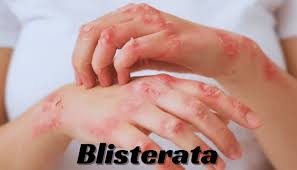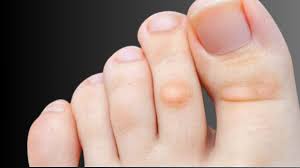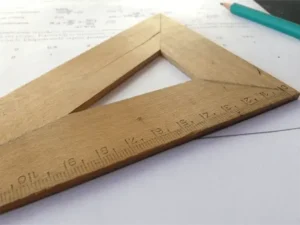
Introduction to Blisterata and its Prevalence
Welcome to a comprehensive guide on Blisterata, a common skin affliction that affects many people worldwide. In this blog post, we will delve into the ins and outs of Blisterata – from its causes and symptoms to treatment options and prevention tips. Whether you are dealing with Blisterata or seeking more information on dermatological conditions, this article sheds light on this misunderstood skin disorder. Let’s explore the mysteries surrounding Blisterata together!
Causes and Risk Factors for Blisterata
Blisterata, a joint skin irritation characterized by blister formation, can be caused by various factors. One primary cause is friction or trauma to the skin, which includes poor-fitting shoes rubbing against the feet or excessive clothing rubbing. This steady inflammation can lead to blister formation.
Another common cause of Blisterata is burns from warmth, chemical compounds, or sun exposure. When the skin is damaged due to these elements, blisters may develop as a shielding reaction by using the body. Certain scientific conditions like eczema and herpes infections can also contribute to blister formation.
Risk factors for growing Blisterata include participating in sports that involve repetitive movement or friction on the pores and skin, wearing sick-becoming shoes or garb, having sensitive skin vulnerable to infection, and being exposed to intense temperature without adequate protection. Awareness of those reasons and threat factors is crucial to preventing and manipulating Blisterata efficiently.
Symptoms of Blisterata and How to Identify Them
It can occur in various approaches to the skin, with signs and symptoms that might be effortlessly identifiable once you recognize what to look for. One of the most common signs is the presence of fluid-crammed blisters on the surface of the pores and skin. These blisters can vary in length and can be painful or itchy.
Additionally, redness and infection around the affected vicinity are typical symptoms of this disease. The pores and skin may also experience warm to the touch, indicating an inflammatory response. Sometimes, blister formation can be preceded by a tingling or burning sensation on the web page.
It’s essential to note any modifications to your pores and skin’s look or texture. If you notice unexplained blisters or unusual redness that doesn’t subside with domestic remedies, it’s crucial to seek medical advice directly. Early detection and remedy can help control Blisterata effectively before it worsens.
Everyone’s experience with Blisterata may vary slightly, so staying vigilant about new ongoing signs is critical to addressing this situation directly.
Treatment Options for Blisterata
There are numerous options when treating blisterata, depending on the severity of the circumstance. For slight cases, self-care measures such as keeping the affected place clean and dry, using bloodless compresses, and using over-the-counter ointments can help alleviate signs.
A dermatologist can also suggest prescription medicines like corticosteroids or antibiotics to lessen irritation and save you from contamination in more severe instances where blisters are persistent or inflict soreness.
In certain situations, draining huge blisters below sterile situations can be vital to promote recovery. It’s essential to follow your healthcare provider’s recommendations cautiously and attend observe-up appointments to monitor progress. Remember that every man or woman’s case of Blisterata is particular, so remedy techniques can also vary. Consulting with a dermatologist will ensure you acquire customized care tailor-made for your precise wishes.
Prevention Tips for Avoiding Blisterata
When it comes to stopping blisters, you can take a few simple steps to keep your skin healthy and free from blisters. One of the most crucial prevention guidelines is to avoid exposure to irritants or allergens that can trigger blister formation. These include chemicals, detergents, and other harsh materials that may harm your pores and skin.
Another critical safety measure is to ensure proper hygiene by keeping your skin clean and moisturized. Dry, cracked skin is primarily liable to growing blisters, so use gentle cleansers and hydrating lotions often. Additionally, carrying appropriate defensive equipment when undertaking activities that cause friction or pressure on the skin can help prevent blister formation.
It’s also essential to note any early symptoms of infection or redness in your pores and cope with them immediately before they become blisters. Being proactive about caring for your pores and heading off capacity triggers may drastically lessen the risk of experiencing Blisterata outbreaks.

Debunking Common Misconceptions About Blisterata
- Misconception #1: Blisters often arise from burns or friction. While these are common causes, blisters can also result from scientific situations like eczema or allergic reactions.
- Misconception #2: Popping blisters makes them heal quicker. In truth, popping blisters increases the chance of contamination and delays the recovery process.
- Misconception #3: Only athletes get blisters. Blisters can affect everybody, regardless of their level of bodily activity.
- Misconception #4: Blisters usually suggest an underlying fitness issue. While a few blisters can signal health, many are caused by ordinary factors like poorly fitting footwear or excessive moisture in the pores and skin.
- Misconception #5: Once you’ve had one blister, you will always get them. Proper prevention techniques and care can reduce the risk of developing blisters.
Remember that knowledge blisterata is prime for effectively coping with and treating these unusual pores and skin anguish.
Adapting to Blisterata: Coping Mechanisms and Utilizing Supportive Channels
Living with Blisterata may be challenging, but there are coping strategies that can assist in revealing extra potential. One vital thing is to prioritize self-care and keep exact hygiene practices to prevent infection and sell healing. This includes keeping the affected region smooth and dry, as well as sporting unfastened-becoming garb to keep away from friction.
Seeking assistance from healthcare specialists, such as dermatologists and primary care physicians, is essential for proper prognosis and treatment. They can provide customized care plans tailored to your particular needs. Additionally, connecting with others who have experienced Blisterata through help corporations or online forums can offer treasured emotional assistance and sensible recommendations.
Incorporating stress-remedy techniques like meditation, yoga, or deep-breathing sports events may help manage signs associated with it. Remember that seeking assistance when needed and prioritizing your average well-being while dealing with this skin situation is okay.
Conclusion and Encouragement for Those Affected by Blisterata
For those grappling with Blisterata, remember you aren’t alone in facing these pores and skin soreness. It may be irritating and challenging in some instances, but there may be a community of guides accessible and ready to offer information and empathy.
Seeking professional help from dermatologists specializing in treating pores and skin issues like Blisterata is step one towards efficiently coping with your circumstances. Remember that restoration takes time, so be patient with yourself throughout the treatment process.
Incorporating self-care practices into your daily routine can improve your bodily and mental health. Whether you practice relaxation techniques, maintain a healthy diet, or stay hydrated, minor lifestyle modifications can contribute to your usual well-being.
Remember to prioritize your mental health as nicely. Coping with a continual pores and skin circumstance like Blisterata can take an emotional toll, so don’t hesitate to reach out for counseling or remedy if needed. Your feelings are valid, and coping with them brazenly is essential.
Above all else, live friendly and hopeful about coping with it. The region’s proper hospital treatment, self-care routine, and assistance machine can help you navigate this undertaking efficiently. Keep moving forward, sooner or later, at a time—resilience is prime for this restoration adventure.
FAQs
Q: Can pressure make contributions to the improvement of Blisterata?
A: Stress can weaken the immune system, making people more susceptible to skin conditions like Blisterata. Managing stress through relaxation techniques and self-care practices may help prevent flare-ups.
Q: Are blisters constantly a sign of an underlying health trouble?
A: Blisters result from various factors, including friction or burns. However, continual or recurrent blisters must be evaluated by a dermatologist to rule out any underlying health issues.
Q: Is it safe to pop blisters at home?
A: Pop blisters are not recommended at home as they increase the hazard of contamination and delay healing. A healthcare professional should do it under sterile conditions if a blister wishes to be drained.
Remember that searching for expert medical recommendations from a dermatologist is critical if you suspect you have Blisterata or every other skin condition. By expertise in the causes, signs, remedy options, and prevention hints mentioned in this text, you are empowered to take higher care of your pores and skin fitness. Stay knowledgeable and proactive in coping with Blisterata for healthier and happier skin!
Can pressure contribute to the development of Blisterata?
Stress can weaken the immune system, making people more prone to skin conditions like Blisterata. Managing stress via rest techniques and self-care practices helps prevent flare-ups.
Are blisters always a sign of an underlying fitness trouble?
Various factors, including friction or burns, can cause blisters. However, chronic or recurrent blistering ought to be evaluated by a dermatologist to rule out any potential underlying health issues.
Is it safe to pop blisters at home?
It is not endorsed to pop blisters at home, as it increases the infection hazard and delays recovery. If a blister desires to drain, it must be done by a healthcare professional under sterile conditions.
Can Blisterata be contagious?
It itself is not contagious, but certain underlying conditions that may cause blisters, along with herpes infections, can be transmitted via near contact. To prevent infections, it is essential to exercise proper hygiene and avoid sharing personal objects.
What are some unusual triggers for Blisterata outbreaks?
Common triggers for the Blisterata outbreak include friction or trauma to the skin due to irritants or allergens, severe temperatures, and medical situations such as eczema or herpes infections.
Are there any lifestyle modifications that can assist in preventing Blisterata?
Yes, maintaining suitable hygiene practices, wearing appropriate protective equipment for activities that could cause friction or pressure on the skin, and coping with stress levels can help lessen the risk of Blisterata outbreaks.
Can certain medications or topical merchandise get worse Blisterata?
Some medicinal drugs or topical merchandise containing harsh chemical substances or allergens can also exacerbate Blisterata symptoms. It’s essential to study product labels cautiously and talk about them with a healthcare professional when you have worries about specific substances.
Is Blisterata more common in positive-age companies?
It can affect people of all ages. However, certain factors, such as aging skin, underlying medical conditions, or lifestyle habits, may increase the risk of developing this condition in older adults.
Are there any dietary factors that can influence Blisterata?
While a weight-reduction plan on my own is not generally an instantaneous purpose of Blisterata, these certain dietary elements include vitamin deficiencies or meal hypersensitive reactions, which can contribute to usual pores and skin fitness and doubtlessly influence the severity of Blisterata symptoms. Eating a balanced, vitamin-rich diet and staying hydrated can guide skin fitness.
Can it be cured completely?
While there may be no definitive cure for Blisterata, the condition can often be controlled successfully with the proper clinical treatment, lifestyle changes, and preventive measures. Working carefully with a dermatologist helps individuals develop a personalized treatment plan to minimize signs and symptoms and enhance high-quality lifestyles.





